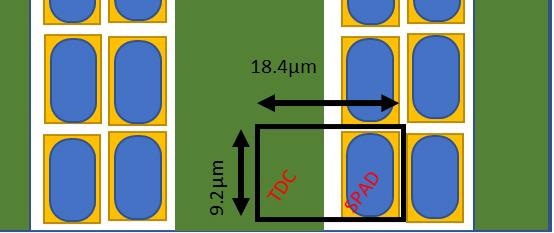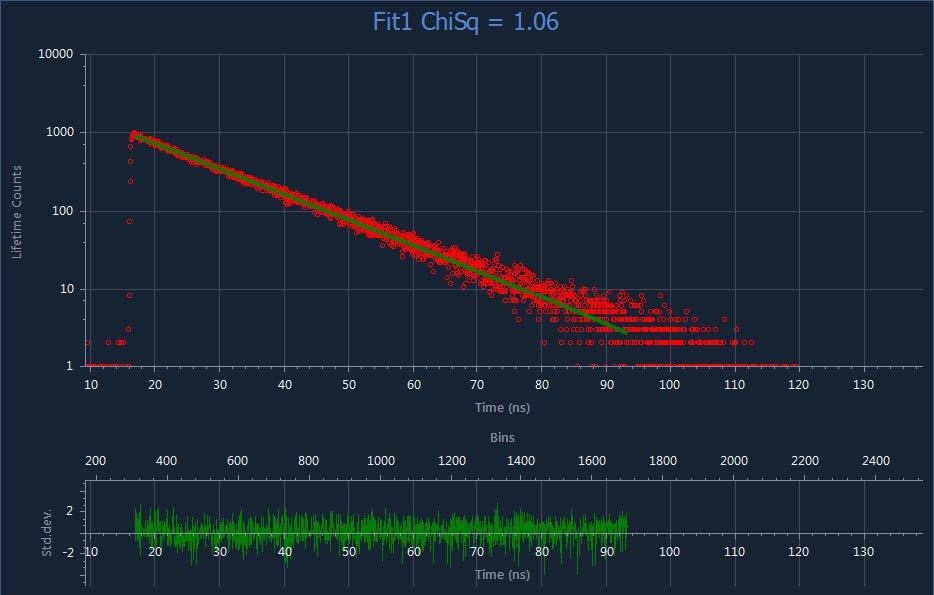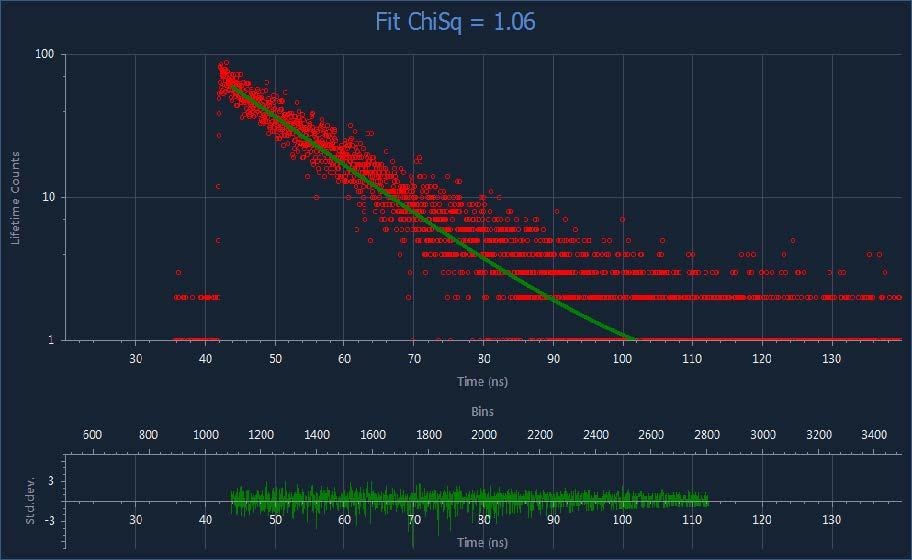The FLIMera camera from HORIBA Scientific is the latest concept in FLIM technology. It is not a confocal point scanning system but rather a wide-field imaging camera with the inherent ability to study the dynamics of FLIM at video rates using easy camera technology.
Features
- Decay kinetics are obtained directly
- TCSPC for each pixel architecture provides up to 24,576 concurrent decays
- Includes an EzTime Image simple and efficient software interface
- Ideal for both advanced and complex molecular analysis, such as detection of biomarkers for disease diagnostics and live-cell dynamics
- Complex multi-component lifetimes
- Sample analysis with up to five exponential decays
Advancements in CMOS technology have resulted in the development of imaging sensors, built on arrays of pixels, with every pixel featuring a single-photon avalanche photodiode (SPAD) and its related timing electronics, also built on a time to digital converter (TDC).
This allows a fast (video rate) determination of fluorescence lifetime based on the time-correlated single-photon counting technique (TCSPC) achieved separately in every pixel.

Figure 1. The SPAD and TDC couple. Image Credit: HORIBA Scientific
A pixel image sensor, measuring 192 x 128 and implemented in a 40-nm CMOS technology, is integrated into a wide-field epifluorescence microscope set-up. The sensor includes a 13% fill-factor and every 18.4 x 9.2-μm pixel contains a TDC with less than 40 ps resolution.
This allows concurrent measurements of up to 24,576 fluorescence lifetimes, with each having 4,096-time bins. With the help of specialized firmware and the EzTime Image software implementation from HORIBA Scientific, the average lifetime, the fluorescence intensity and the phasor plot produced from the TCSPC imaging measurement can be concurrently displayed in real time at video rates of more than 30 fps (refer to Figure 2).

Figure 2. Four simultaneous datasets are presented. Image Credit: HORIBA Scientific
Modes of Operation
The FLIMera camera has been developed for use with the highly intuitive EzTime Image software from HORIBA Scientific. This advanced software is utilized for FLIMera control as well as acquisition and analysis of data. The FLIMera camera offers four modes of operation.
- Manual—User start and stop of acquisition offers FLIM data and TCSPC intensity image for lifetime analysis.
- Timed—User-defined run time for acquisition provides FLIM data and TCSPC intensity image for lifetime analysis.
- Streaming to HDF5 file—TCSPC data can be streamed, for a user-defined period, to an HDF5 file. This includes complete records for every photon in every pixel, so that information is not lost and can be utilized to rebuild frames for complete decay analysis.
- Phasor Plot—Complementing the histogram representation is the potential to demonstrate and choose lifetime data in the form of a real-time phasor plot (refer to Figure 3). The phasor plot should be initially calibrated through a lifetime standard.

Figure 3. Phasor plot. Image Credit: HORIBA Scientific
The video-rate capability is illustrated using FUN-1 labeled yeast cells and standard samples, as shown in Figure 4.

Figure 4. A sequence of images extracted from FUN-1 labeled yeast cell lifetime. Image Credit: HORIBA Scientific

Figure 5a. Decay from DeltaFLEX cuvette system. Image Credit: HORIBA Scientific

Figure 5b. Decay from just one of 24,578 SPAD pixels demonstrates the very high resolution and TCSPC fidelity of FLIMera. Image Credit: HORIBA Scientific
FLIM and HORIBA
A wide-field imaging method is enabled by the novelty of the in-pixel detection and timing technology. This imaging method considerably decreases data acquisition times, thus facilitating the analysis of dynamic events.
The FlIMera camera accounts for HORIBA’s long history in the field of fluorescence measurement, known for winning the coveted Institute of Physics Business Innovation Award.